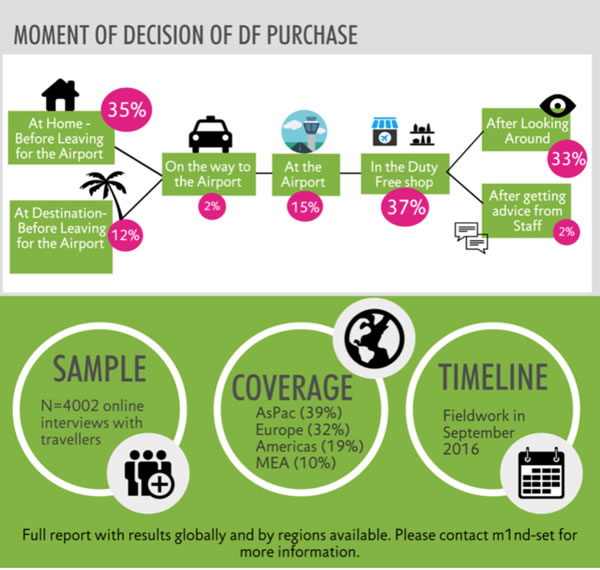INTERNATIONAL. The design and atmosphere of duty free shops is one of the main factors impacting travellers’ overall experience, according to Duty Free World Council (DFWC) analysis.
The issue has been explored for the first time in the organisation’s quarterly Global Shopping Monitor (designed to measure perceptions of the duty free & travel retail industry among travellers), which is produced in partnership with research and consultancy agency m1nd-set. The latest report, for the third quarter of 2016, showed that design and atmosphere was the third most impactful element affecting shopper satisfaction levels.
Perceived value for money remained the most important contributing factor, followed by uniqueness of products and services.
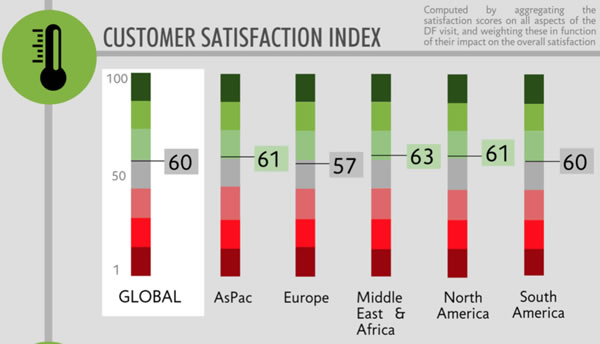
Source: (all charts): DFWC; m1nd-set
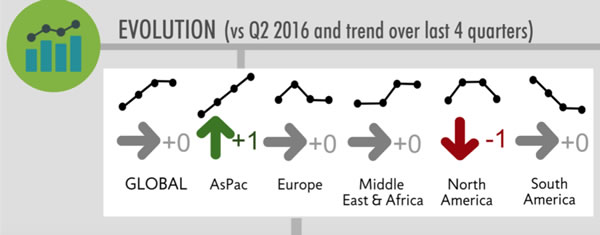
The latest Global Shopping Monitor is DFWC’s fourth, meaning a full year analysis of key indicators can be undertaken. DFWC said its global satisfaction index had seen a two-point gain since the first report (covering the fourth quarter of 2015). Asia Pacific performed particularly strongly with a +4% increase compared to the first edition and +2% growth on the previous quarter this year.
More than 4,000 travellers were surveyed worldwide in the period as the basis for the report.
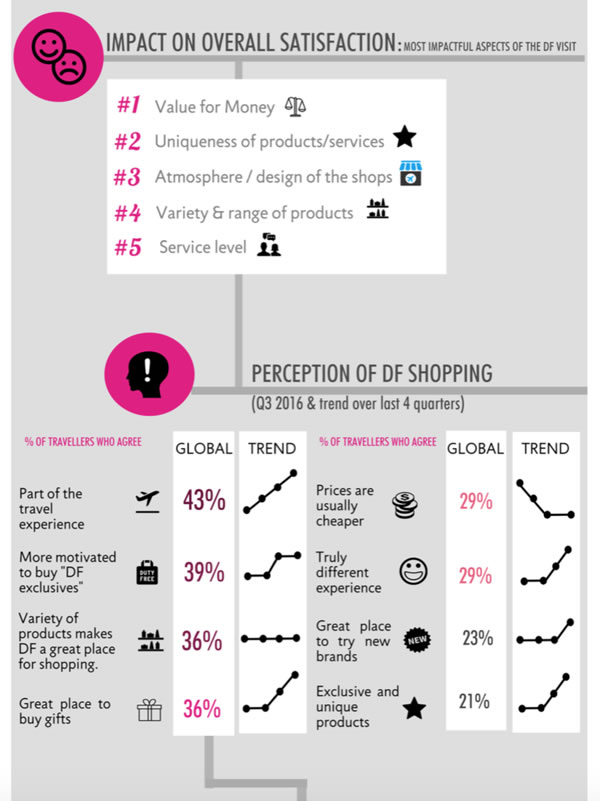
The importance of duty free shopping as part of the overall travel experience has increased consistently over the past four quarters, up +3% since Q4 2015 and up +1% on the previous quarter this year.
Gifting was up +1% on the previous quarter and +2% since Q4 2015. The unique experience and opportunity to purchase exclusive products continued to show upward trends, DFWC noted, with both improving by +2% in satisfaction levels among shoppers globally since the first Global Shopping Monitor. “This indicates a strong performance by the industry in meeting shoppers’ needs on these measures,” the organisation said.
The use of electronic devices to gather information on shopping also showed a strong upward trend, increasing by +2% compared to the last quarter and +4% since Q4 2015. Similarly, the percentage of shoppers claiming to never use their electronic devices for shopping information has fallen sharply over the past four quarters, from 53% to 42% and down -7% since the previous quarter. Chinese travellers are particularly fond of using their mobile devices to obtain information, DFWC said.
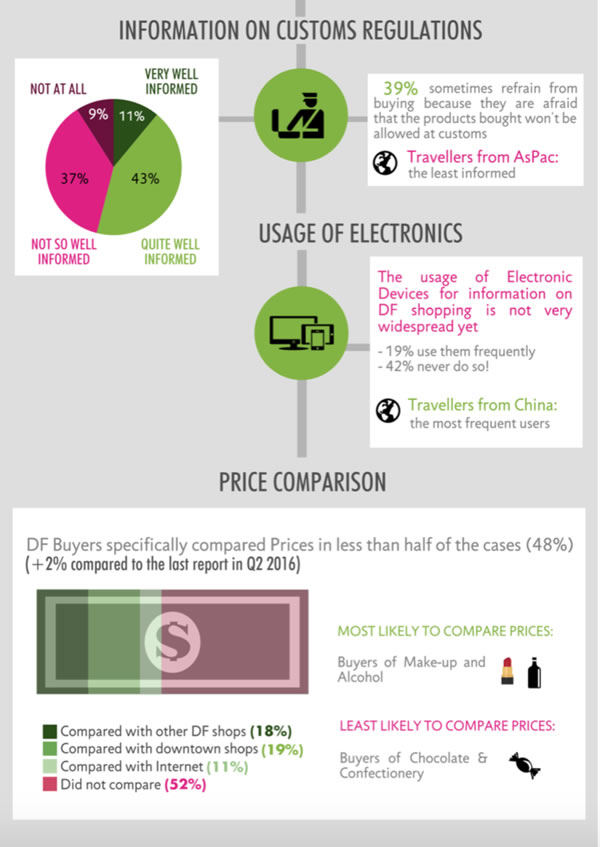
The organisation noted a steady improvement in customer satisfaction levels with regards to information on customs regulations, up by +4% since the fourth quarter of 2015 and +2% on the previous quarter. There has also been a positive trend in the number of customers refraining from purchasing because of fear of confiscation, which has fallen -5% over the past four quarters.
The percentage of shoppers who find that duty free prices are cheaper than elsewhere has fallen by -2% since the first Global Shopping Monitor, and DFWC said shoppers were becoming increasingly price conscious. “Price comparison is on the increase with almost 48% of shoppers now comparing duty free shop prices with those offered in other channels, especially with online stores and particularly in the alcohol and beauty categories,” it said.
More detailed data on the regional disparities for each aspect studied is available from m1nd-set upon request (info@m1nd-set.com).
